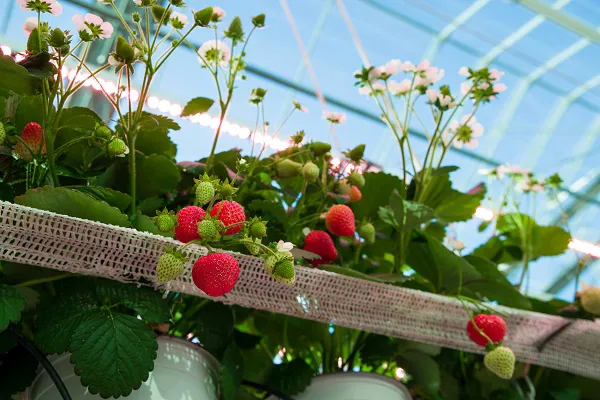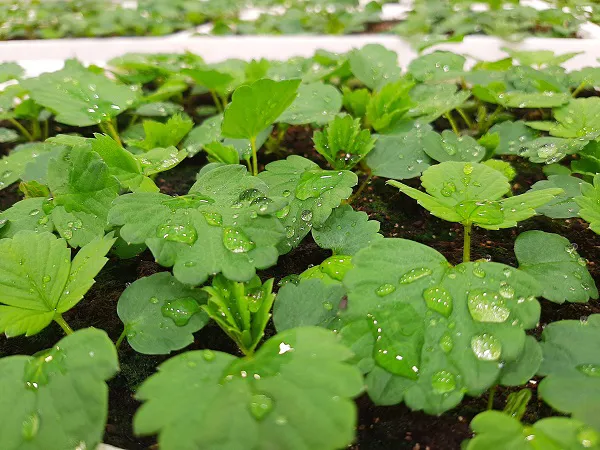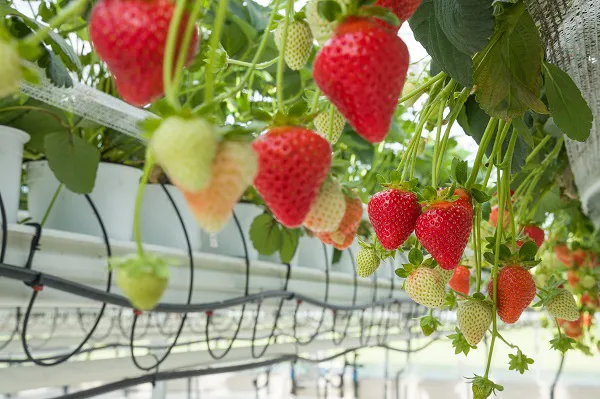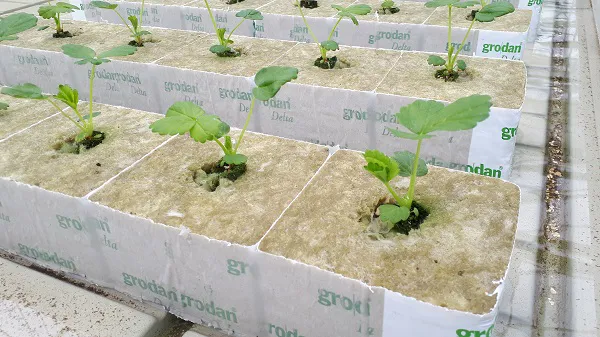"Strawberries still offer plenty of growth opportunities," says Gé Bentvelsen, director of ABZ Seeds. This Dutch company has, for more than 25 years, focused on propagating perennial F1 hybrid strawberry varieties from seed for greenhouse cultivation. In 2011, strawberries were grown under glass on 110 hectares in the Netherlands, reports the Central Bureau of Statistics. By 2021, that had increased to 440 hectares. Greenhouse cultivation - this is where the trade opportunities lie, Gé says.

"It provides far more certainty; you don't get nasty surprises and can count on a quality product. Plus, you can steer trade better in the distribution chain. It's not for nothing that strawberries are now the third-largest greenhouse crop in the Netherlands. You'd never have thought that ten years ago." He points out that the strawberry-from-seed concept ties in with other hot glasshouse crops like tomatoes, cucumber, and bell peppers, which are also grown from seed. "I think we can still make great strides with our unique seed propagation concept," adds Gé.
Reaching tipping point
But he already sees market growth for this from-seed concept. "We just need that extra push to reach the tipping point." ABZ Seeds is working on that. They have started a demo trial. "Growers can then follow the cultivation on rockwool and under assimilation lighting in a minimally heated greenhouse from October to March."

"After all, seeing is believing," explains Gé. Rockwool was chosen so that the cultivation matches other greenhouse crops that are mostly done on rockwool. Not on peat and coconut substrate that is usually used for strawberries. "This way, the growers don't have to switch; we try to make the threshold as low as possible."
Needs less power
Gé is convinced that strawberry-from-seed greenhouse cultivation offers opportunities." Especially now, when many questions are being raised about how much power heating greenhouse vegetables use. That discussion is currently in full swing: shouldn't we look at alternative crops to grow under glass? Strawberries require significantly less energy than tomatoes or cucumbers."
"They are, thus, a prime candidate. And if growers are used to working with plants grown from seed, then the switch is much easier. And that's interesting because the greenhouse is there, the heating is there. But how do you make money when energy prices are so high? Market conditions have changed so much. This, therefore, offers greenhouse vegetable growers a chance to begin cultivating strawberries," says Bentvelsen.
Enthusiastic consumers
There is definitely interest, ABZ Seeds notices. However, there are still plenty of questions about this strawberry-from-seed concept. Gé attributes this partly to familiarity with the traditionally-propagated varieties. "Trade hinges on certain varieties and is very familiar with Elsanta. Traders don't easily switch to a different strawberry variety." That doesn't mean that seed propagation-based varieties aren't in demand. "We have regular contact with marketing organizations."

"They're enthusiastic about the varieties we now offer for greenhouse cultivation," Gé points out. The starting point is consumer perception. "Do people love the product? The strawberries must be delicious because that leads to repeat purchases." He sees that, since you cannot just taste a strawberry, shoppers appreciate a nice-looking strawberry. "Consumers like lovely, attractive strawberries - no white tops, but nicely colored, shiny, and well-ripened.
Winter opportunities
Should all be in order, quality-wise, Gé thinks there is still plenty of room on the market for Dutch greenhouse strawberries. "Especially in winter, where there's a limited supply of good quality, tasty strawberries. The imported strawberries' quality is often why people avoid strawberries in the winter. That's a real shame because it's entirely possible to grow a quality product under glass here in the Netherlands." For ABZ Seeds, flavor largely determines the quality and is, therefore, an important focus in the breeding process. "Flavor has always been number one for us," Gé concludes.
Why propagate from seeds instead of cuttings?
Gé says preventing disease and pest transfer from plant material is one reason for working with seeds. "You don't get that with seeds." Logistics is another reason. "It's much easier to ship seeds than cuttings over long distances," he says. Also, a cutting takes about 18 months to two years to produce its first harvest. A strawberry plant grown from seed can carry fruit after only about four months.

"Growers, thus, don't have to plan as far in advance and are much more flexible." All these advantages prompted ABZ Seeds to begin seed propagation of strawberry varieties some 30 years ago. "In that time, we've built a range both for the fresh market and for the garden plant market and small packs. We've also proven that seed propagation really works."
Ilona Smith ABZ Seeds
ABZ Seeds
+31 (0)228 515 280
ilona.smith@abz-strawberry.nl
www.abz-strawberry.com
